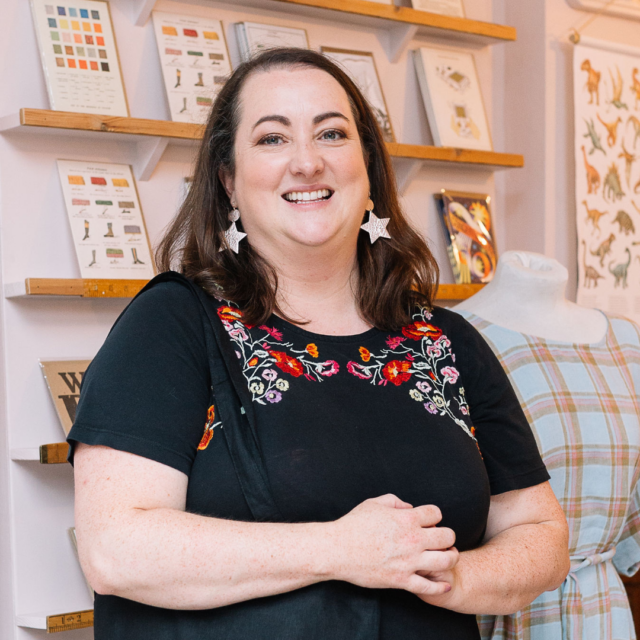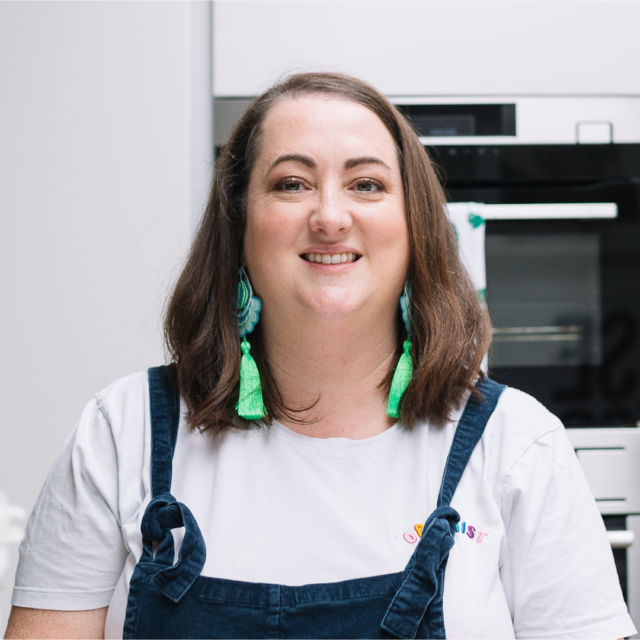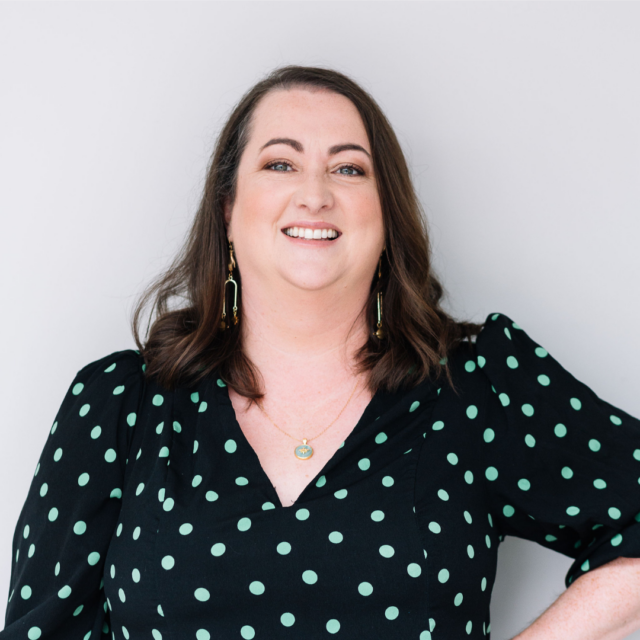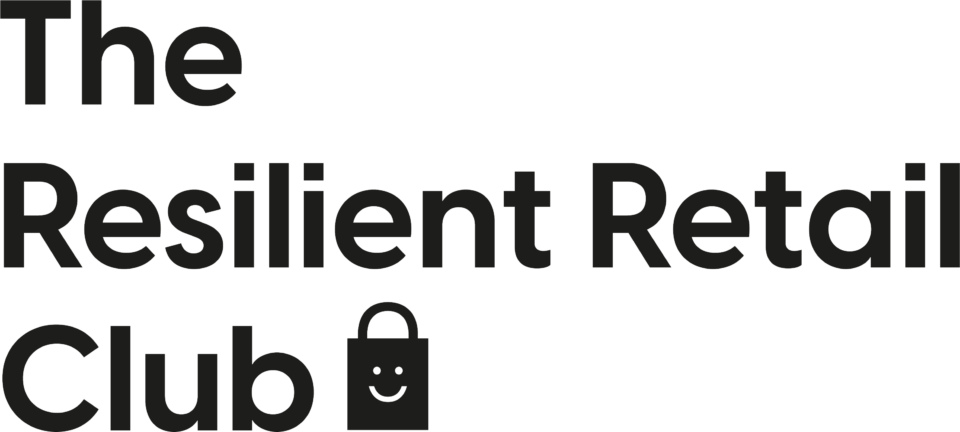A Retail Owners Guide to Effective Branding and Website Design with Tamsin Rennie
Catherine Erdly: What is more important, how your website looks or how it performs?
Hi, my name is Catherine Erdley. I am your host today and also the founder of the Resilient Retail Club, which is my membership group and mastermind for product businesses.
Today, I am talking to Tamsin Rennie, who is a brand and web designer all about the importance of having a website that doesn’t just give look great, but one that actually performs as well.
Tune into this episode to find out what the common mistakes are that Tamsin sees small businesses making when it comes to websites that they have DIY’d and which you need to focus on first, if you’re considering either having your branding or your website redone.
Welcome to the Resilient Retail Game Plan, a podcast for anyone wanting to start, grow or scale a profitable creative product business with me, Catherine Erdly. The Resilient Retail Game Plan is a podcast dedicated to one thing, breaking down the concepts and tools that I’ve gathered from 20 years in the retail industry.
and showing you how you can use them in your business. This is the real nuts and bolts of running a successful product business, broken down in an easy, accessible way. This is not a podcast about learning how to make your business look good. It’s the tools and techniques that will make you and your business feel good.
Confidently plan, launch and manage your products and feel in control of your sales numbers and cashflow to help you build a resilient retail business.
Welcome Tamsin! Tell us a bit more about your business
Catherine Erdly: Hi Tamsin, welcome to the Resilient Retail Game Plan. Thank you so much for joining me today. Do you want to start off by introducing yourself and your business?
Tamsin Rennie: thanks for having me. I’m Tamsin and I run Monroe Creative, which is a branding and website design studio. So I work with female founders and create branding and, or websites to help them achieve their goals in a way that feels intuitive and easy.
Catherine Erdly: Fantastic. And you yourself had a product business for some time.
Tamsin shares her experience with her own product businesses
Tamsin Rennie: Yeah, I did.
Catherine Erdly: you started this?
Tamsin Rennie: yeah. So my background is is product business. I’ve had two product businesses of my own which spanned about 12, 13 years. My first business was called Studio Seed and I started with greeting cards and stationery. So I sold those not only direct to customer, but I did a lot of wholesale and distribution with that company. And then that brand evolved into more gifting. And I did a lot of curated gifting for luxury gifts for women. And that sort of coincided with when that was launching and taking off then COVID happened. But I was one of the sort of, if you can say lucky ones that COVID was impacted my business really positively because the shops were closed.
No one could go out to buy gifts, but people still had birthdays. And there was still events and things going on and people wanted to show their love through the, through gifts basically when they couldn’t be together. That business was just, it, this just went insane to be honest.
And then I had hardly any staff because everyone was like homeschooling their children. Yeah. It was really tricky, but it was. It was really, it felt really good to be a part of keeping people connected. We used to handwrite gift notes and things. And then honestly, I was in tears most days with the messages and things like people just wanting to stay in touch and saying that they missed people.
And it was really heartwarming actually. So after COVID the biggest restriction died down, then things calmed down. And I think it just, I think I’d already been considering a change before COVID. And I think it just confirmed to me I just thought, okay, I feel like I’ve done everything I want to do with this business. Because it had grown quite big and I had quite a lot of stuff and we had a big studio and I was spending a lot of my time managing and rather than actually the doing, which is what I really enjoy. I decided to close that business, which was really positive, but really sad in equal measures.
Because it was like my little baby. But also. It felt really positive to end on a high and to go, okay, I’ve done that. And I want to do something else now. I was supposed to take lots of time off and I think I had about a week off um, straight, straight back into it. And I went back to what I was actually trained in, which was my degree was in embroidery, which is very niche.
But at the end of my degree course, I’d done like a children’s wear collection, and I’d always wanted to revisit that in some way. So then I set up my second company, which was Magic and Monroe, and I specialized in really lovely dress up accessories, capes, crowns, wands, things for make believe play.
And it was such a joy to be back in a business where I was doing it all because I love making, and I love, I love doing all the aspects of the business. And I love packing orders and I love it all. I really enjoyed that. And then that sort of niched into now it’s evolved into just heirloom dolls.
So that was quite a bit, that was a huge learning curve actually, because I had to learn all about, um, like toy standards and testing. All the UKCA stuff, which is, at first I thought, when I started looking into it, I almost thought this is too much, I can’t do this. But I powered through because I will not be beaten. and so yeah, then, I created a whole collection of dolls, like little animal dolls that are all like safe for play and everything. And that’s still good. That’s that business is still running. But the new business is where I’m focusing most of my sort of energy at the moment. Wanted a bit of a, Change from product.
So now I’m service mainly. And it’s such a big adjustment because when I’m busy in a product business, it’s just head down crack on, get the orders out. Whereas when you’re busy in a service based business in a business like mine, it’s a lot of face to face and interaction, which is wonderful.
And I absolutely love it, but it’s an adjustment and I, it’s quite draining in a way. So I’m finding that quite a, quite an interesting adjustment.
Catherine Erdly: over time, I think you get more accustomed to it, but I totally know what you’re saying.
Tamsin Rennie: Yeah. Yeah. It’s just a big difference.
Catherine Erdly: So you’re bringing to Monroe creative, all of this knowledge and experience of running product businesses. And so you’re combining your understanding of how important it is for a business to look good, the design to be on point to have that sort of, You said a lot of people you work with are quite premium brands.
Tamsin Rennie: Yeah. Yeah.
How important is it for a website to really have the right look for the brand?
Catherine Erdly: So when you, so you’re bringing all of that knowledge, but then also your understanding of the functionality of the importance of functionality. So talking from that sort of starting point, thinking about a website, thinking about branding, how important is it for a website to really have the right look for the brand?
Tamsin Rennie: It’s really important. And because you could have the most functional website in the world that’s driving a ton of traffic to your website, but if then when people get there, they’re not connecting to it, then they’re just going to leave and there’s no, there’s no point. It’s all got to, when I design and any good design I see, it’s always very strategic.
So it’s strategically designed to appeal to that very specific customer you’re targeting. Whether that’s high volume, low cost kind of thing. And then, the visuals reflect that or whether it is more really high price point and less volume. And then that luxury and that’s the kind of clients that I tend to work with.
And that luxury has to be really clear on the website. The aesthetics and the visuals have to, and that looks very different for different businesses but it is really important because, people look at so many websites in a day. I do anyway, I’m constantly just browsing and, you’ve got to stand out. You’ve got to be something a bit special for, to keep people there and to keep people scrolling and keep people interested in what you’re offering. So yeah, it’s really important.
Can you talk me through what the process might look like to create a specific appeal for a very specific customer?
Catherine Erdly: So if I were to come in to you and I would say a jewelry brand, like a sort of Demi fine jewelry or more premium jewelry offering. And you talked about being really strategic about how to appeal to a very specific customer. Can you talk me through a little bit more about what that process might look like for this imaginary?
Tamsin Rennie: Yeah. So I, yeah, so I’m actually working with two jewelry brands at the moment. Funny you should say that. Um, So it’s very much again, starting with that customer profile and what are they, What do they want? What do they need? What do they desire? Their pain point. I hate that word pain points, it is, it’s their pain points.
And it’s very, to me, it’s very important to have the website design, but also linking in with the messaging and the copy and then the imagery that you’re using. To me, it’s like a holistic thing and I tend to you. I always encourage clients to have professional photography and where possible work with a copywriter because all of these things together with the design, it all goes hand in hand and it just makes for a much more much more successful website.
So we, yeah, we would talk through the customer and the customer journey and create like a user experience. throughout the website that feels intuitive and that’s it’s about giving them the information in as few clicks as possible, that kind of thing, and not making them search around for it giving them really clear options about where to go.
And at the same time as making it look, on brand and, interesting and beautiful and like they want a piece of it. It’s very much like your, it’s your shop front. It’s your, you’re welcoming people into your shop and you are being that lovely sales assistant that’s saying, I’m here if you want any help.
You’re not in their face going, Oh, what about this? And what about that? And,
Catherine Erdly: Yeah.
Tamsin Rennie: It’s almost like you’re designing it to be yeah, that lovely nice sales assistant for your shop.
What kinds of mistakes does Tamsin see shops make when they DIY their website?
Catherine Erdly: So the aesthetics are really key, but obviously then functionality is also really crucial. So what are some of the mistakes that you make when you see, let’s say for example, somebody’s been DIYing their website, which, with a lot of these plug and play builders now, you certainly can do that, but what are some of the common mistakes that you see where people make when it comes to, maybe aesthetically it works, but the issues of functionality?
Tamsin Rennie: Yeah, I see it a lot. And I’m a big, I’m a big believer in DIYing your own website to begin with. It’s. It’s not always possible to invest in like a professional website. But the thing is with these plug and play hosts and platforms, like you said, is that it’s quite easy to make it look beautiful, but the functionality isn’t really considered.
And if you don’t know, like, how would you know to make these changes? So I think the main thing is strategy and just having that awareness of, what do I want the goal of this website to be? And what do I want my customer to feel? And what, all that, but SEO is such a huge thing.
And I’m actually working on an SEO course at the moment because so many of my clients are just nervous about SEO because they don’t understand it. They think it’s far too technical for them. And it’s scary because it’s very jargony and also is honestly quite dull. Isn’t it doesn’t have to be really difficult.
And I, again, I’m, I love to learn and I’m self taught in pretty much everything because, That’s just the way I am. But so I found it quite interesting to look into SEO, but having a really sort of basic understanding of SEO is going to make such a big difference.
For example, A really common thing that I see is on a website when people use like headings as to style the website and to make it look pretty. So for example, on their homepage, they’ll say welcome in like their heading, their main heading font. And what you’re doing there is you’re telling Google that this page is about welcome.
So Google has very little information to then show it to the people who want your. What you’re offering. Instead of welcome, let’s take your jewelry brand example. Your main heading font should be using a keyword. So Demi find jewelry for, I don’t know, luxury lovers or something.
And SEO is such a huge subject, but there are very easy wins that you can have that will make a big impact on, cause essentially SEO is. getting Google to show your website to the people who want your product. So getting it right is almost like a free marketing tool that’s driving traffic to you.
So it’s something you can’t really ignore. And everyone, all my clients hate me banging on about it, but I’m very like, you must do this.
Catherine Erdly: So SEO, so not paying enough attention to SEO is one of the mistakes that you see people make when they’re function, they’re prioritizing aesthetics over functionality. What are some of the others?
Tamsin Rennie: Things that I see a lot are like really slow loading websites and huge images and images, not again, this is SEO, but like images labeled as like IMG 5, 7, 9, 10, 11, rather than actually what that image is. And huge, like 2. 5 megabytes or killer. I don’t know what the thing is, but huge images that are slowing down your website, taking a age to load and Google hates that. So it won’t be showing anyone that page because. it knows that viewers will just go, I can’t be bothered with this. And again, that is technically an SEO subject, but yeah, making sure that all your images are sort of high res, but compressed and labeled correctly.
And that also ties into like accessibility, because if you haven’t done There’s a place in all images where you can input the alternative text or alt text and that is what sort of screen readers use for people with accessibility issues. And again, that’s an inclusivity thing that’s really important.
As well as being important for Google to show your website to people. Yeah. And then another thing is just that user experience. And if I go on a website and I’ve come from Instagram, let’s say, and they’ve got a lovely bracelet on there that I would like to buy, but can I find it on the website?
No, I don’t. I can’t see where. Bracelets are, I can’t see where new collections are, I can’t find what I’m looking for and again, it’s some websites are prioritizing looking beautiful over, you’re providing a service for your customer and you’ve got to be making it as easy as possible. Otherwise, they’re just going to go somewhere else.
And it’s all things that DIY, if you’ve DIY’d your website, it’s all very attainable to do yourself with a bit of research and yeah, it’s about prioritizing that as much as you’re prioritizing how beautiful your website looks, because
Catherine Erdly: Yeah,
Tamsin Rennie: they go hand in hand.
Catherine Erdly: Yeah, for sure. So I know what you mean. And I’ve even found it as well where I’ve been shown an ad for something and then I go to the website of that company. Maybe not necessarily directly from the ad, but it’s like an ad they’re showing quite often. But then when I get to the website, I can’t find.
Tamsin Rennie: Yeah.
Catherine Erdly: really dig around to work out which pair, for example, which pair of earrings I saw in the ad, I’m thinking and you do want it seamless. You want it to be, if you’re putting a lot of money behind something in an ad, make it easily discoverable.
Tamsin Rennie: As few clicks as possible, don’t you to to, for them to find what they’re looking for. Because people are really impatient as well, and, like I say, you’re looking at so many websites a day, you’re browsing so much a day, and people just haven’t got the patience, so they’ll just go on to somewhere else’s website, which is a shame.
Catherine Erdly: Yeah. Which is definitely not the goal. Whatever your goal is for your websites. It’s almost certainly not pushing you to somebody else’s website.
Tamsin Rennie: absolutely.
The relationship between branding and web design
Catherine Erdly: I wanted to talk to you a little bit about the relationship between branding and web design, because this is something that comes up in conversations, whether it’s in my membership group or the mastermind in my mastermind, but sometimes it’s people get to the point where they’re like, okay.
I know I want to elevate what I’m doing and maybe they’ve DIYed it for a bit for a couple of years and they’re at the point now where they think, okay, I’d like to move on to the next level and I’m not DIY, but it’s almost like a bit of a chicken and egg. Can you do website redesign without branding?
Can you do? Branding and then implement some bits to yourself as web design. Is it always better to try and do the two things together? And is it better to, it’s interesting that you do branding and web design. What’s your feeling about how that whole, the whole, if you’re a small business side of trying to make that decision about branding, web design, which bit you can do, which bit you can DIY.
What are
Tamsin Rennie: Which to prioritize?
Catherine Erdly: Yeah
Tamsin Rennie: as doing the job I do, I would say that it’s really important to have both. That’s the gold standard, isn’t it? To have branding that’s really effective and a website that’s really effective. Cause it’s almost if you had a really stunning, fantastic website, but then your colors and your fonts and your logo aren’t, Like projecting what you do, it’s like a waste.
And then the same way, you can have the most beautiful branding that really connects to your customers, but then if your website is. not up to scratch, then, you’re going to lose some potential business. But I think in terms of branding, as long as as long as everything is cohesive and consistent and not, absolutely not aiming at, if it’s not miles off.
then, you can still create a fantastic website experience. Less is more in terms of fonts and colors and just keeping it very, yeah, consistent. So you would you don’t necessarily, if there was, if I had to choose, I would choose a website and just be very strategic with what you’re using from branding and keep that very simple.
And, There’s still ways without having professional branding that you can, create that cohesive, consistent look throughout a website. But yeah, I would always say both are important.
Catherine Erdly: So do you think it’s better to do it that way around to have, so let’s say you had to choose between having some help with web design or with branding. So you think it’s better to I suppose that makes sense to have a website that is fully functional as long as it’s reasonably coherent and you’ve not gone overboard with logos and colors and fonts and things.
Rather than say, having your branding done as a standalone and trying to implement it yourself the website.
Tamsin Rennie: I think it really depends on your business and the stage you’re at in your business. If you’re just starting out, perhaps I always prioritize my website and my SEO in terms of my marketing, because I know that’s longer term results. I’m building on my ground.
I’m not having to battle algorithms and I don’t want to rely on social media to bring in my work. If you were just starting out, then I would say, yes, I would say DIY your branding, but get some help with a website that’s going to be a powerful marketing tool, which will then bring you money.
And then down the line, invest in some branding, but then if you’re very much, I don’t know, social media based and all you need is perhaps you only need an email list and a sort of sales page or a sales funnel, then perhaps then. You do need to focus more on your branding and attracting that customer because your digital side is quite minimal.
So it totally depends on the business, where you’re at, how your business works, the structure, that kind of thing. Yeah, so sorry, I didn’t really answer your question, but it depends,
Catherine Erdly: it depends. Yeah.
Tamsin Rennie: Yeah.
Catherine Erdly: That’s okay. That works as an answer. And of course the best solution is to have somebody to do both and
Tamsin Rennie: Yeah, I would say so. Yeah, I would say so. I think like a lot of people, I work with a lot of people who have DIY’d their website and branding and then they’re ready for change. And then they really see, because they know their business, they’ve had a few years of knowing their business and understanding their customer and that kind of thing.
They’re really well placed to then work with me on branding and website because they do know their customer inside out and they know where they want to go. Whereas when you’re first starting out, there’s a big learning curve and you might invest in branding and then six months late, like down the road, you might have a bit of a pivot and then, have to restart.
So it’s really hard. It’s really hard to know what to invest in and where. But it’s just about looking where you are, where you want to go and being really clear on your goals. And then, the answers will come to you, right? Okay. I really need a powerful website. Cause I don’t want to rely on social media.
So I’m going to invest in a website, that kind of thing.
How to learn more about Tamsin
Catherine Erdly: Brilliant. Fantastic. Thank you so much. Tamsin. It’s been really interesting talking to you. Do you want to finish this off by telling everyone where they can find out more about you?
Tamsin Rennie: Yeah. Thanks for having me. So my website is www. munrocreative. co. uk and I’m also on Instagram. I think it’s Munro. underscore creative underscore studio. I like to share lots of tips and things on my Instagram. It’s um, and yeah, so check me out on those.
Catherine Erdly: Thank you so much for listening. Don’t forget to like or follow or subscribe to this podcast, wherever you’re listening. And you’ll be the first to know about each new episode, which comes out on a Thursday morning. And of course, if you have a moment to rate and review the podcast, then that makes a huge difference as well.
Have a great week.







